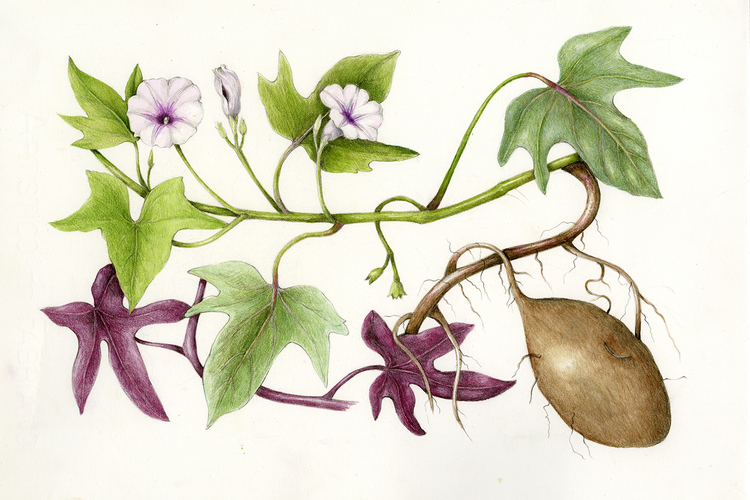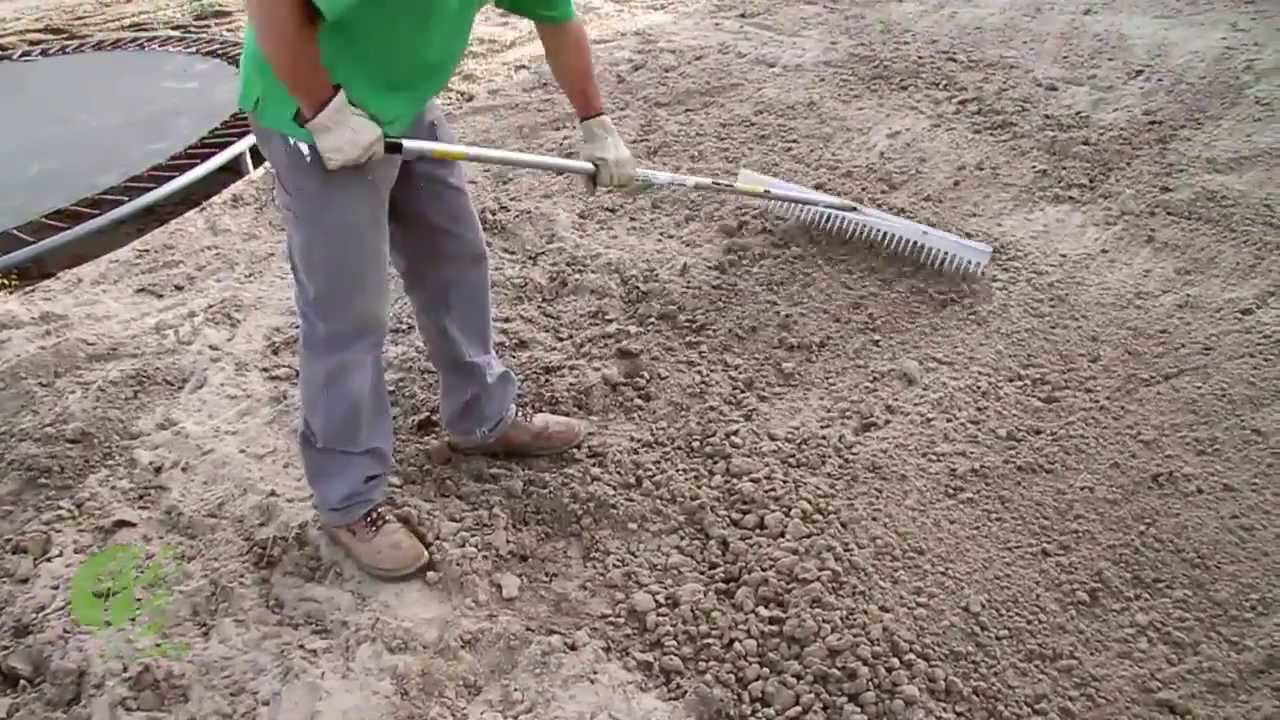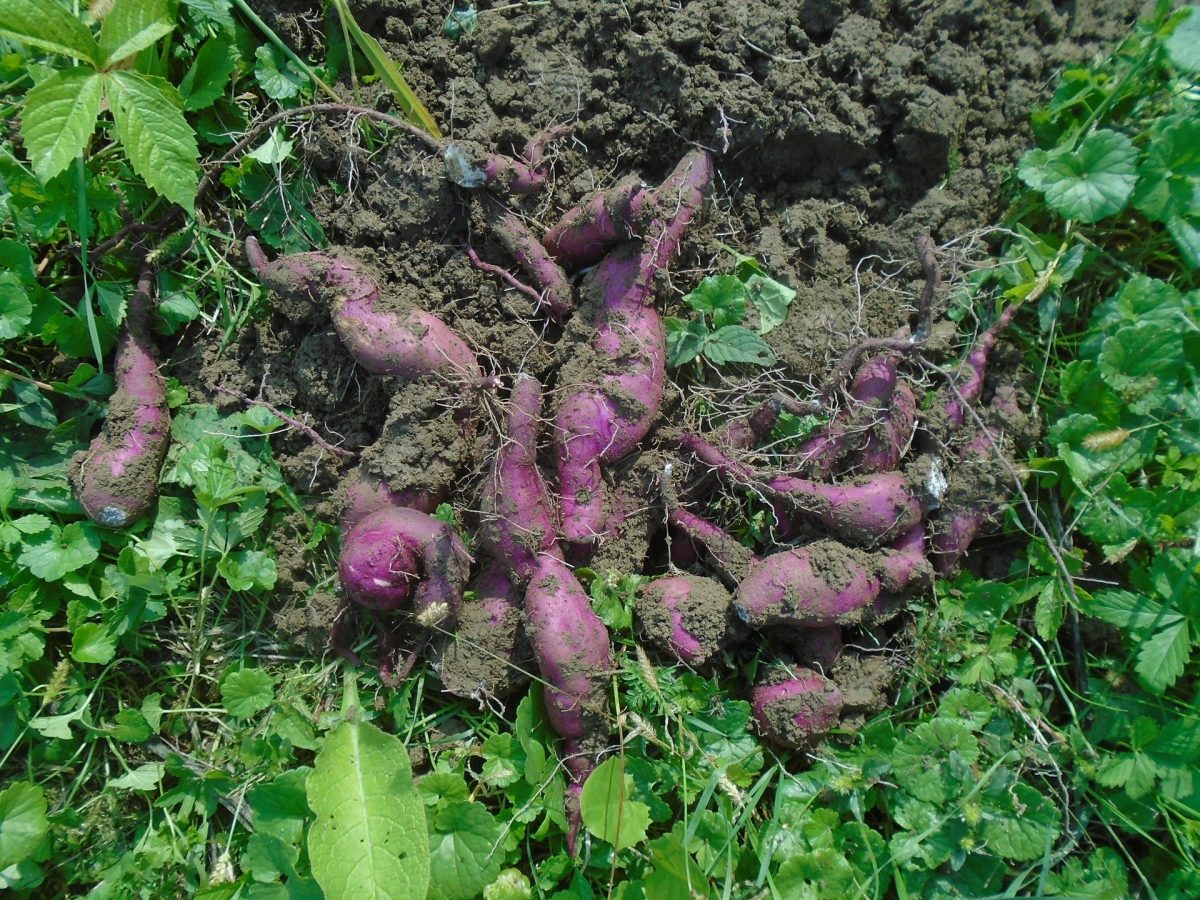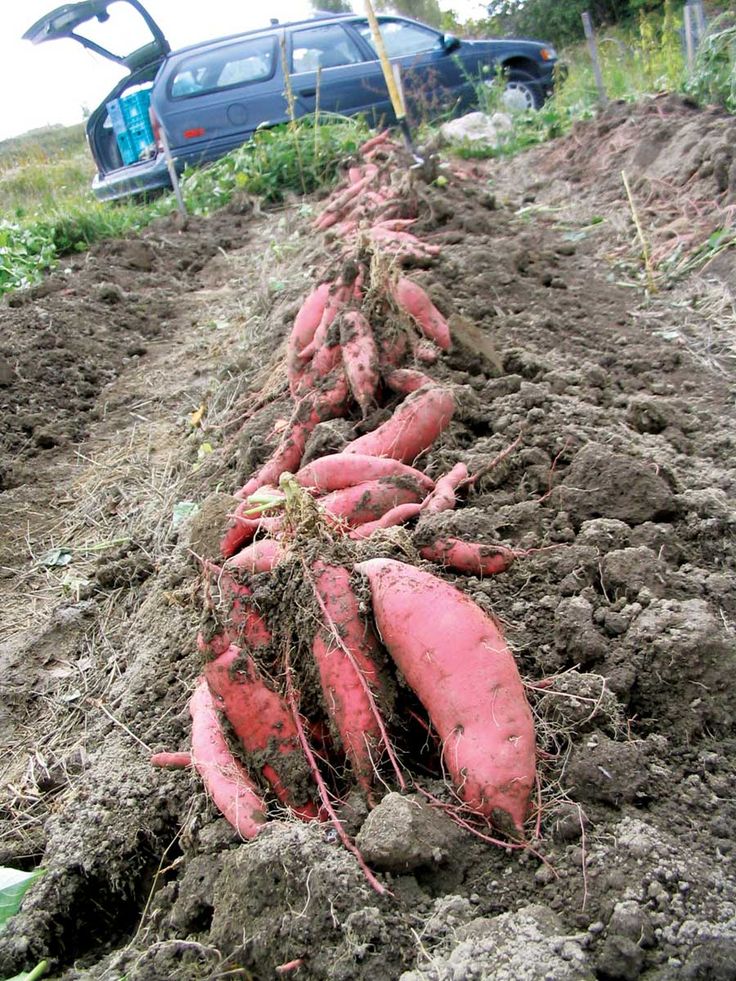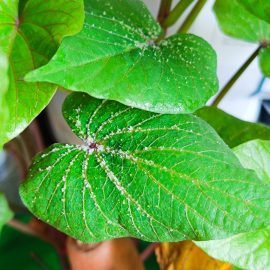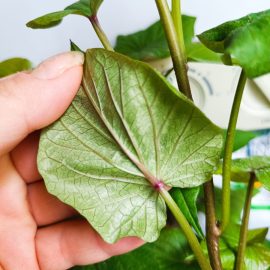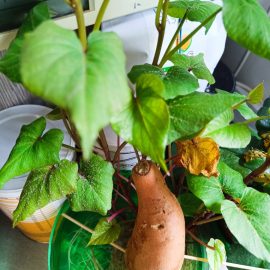Sweet potato, information about crop management
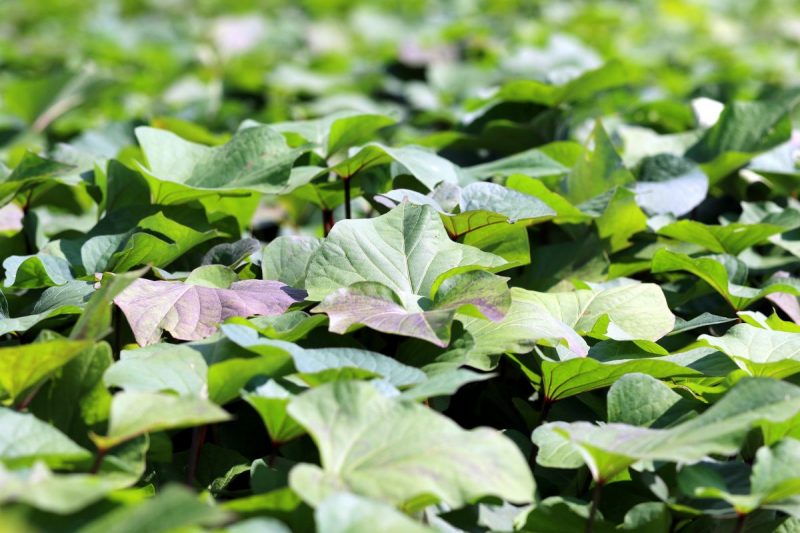
Sweet potato (Ipomoea batatas) is a species that belongs to the Convolvulaceae family. This plant is native to South America and is currently grown in Asia, America, and Russia, with China being the world’s largest producer. Sweet potatoes contain high amounts of carotene, fiber, mineral salts, and vitamins. They are recommended in the diet of people suffering from diabetes, heart disease, digestive disorders, having also a vitaminizing effect, and strengthening the immune system.
Botanical particularities
Sweet potato is an annual species with a well-developed root system but thin roots. This species forms adventitious roots from the root ball which develop, thicken, and thus give rise to the edible part of the plant.
The stem is similar to that of other plants in this family, it has many branches and the mechanical tissues are not well developed (creeping). The leaves are simple, alternately arranged, and ovate. The flowers are large, white-purple.
Climate and soil requirements
It is a thermophilic plant, preferring temperatures between 18 and 28℃ during vegetation. If the temperature is negative, the plants die. It grows well on soils that can provide constant moisture but can withstand short periods of drought, but yields are affected. Grows well in direct sunlight and needs 10 to 12 hours of light per day. It can tolerate heavy-textured soils but prefers clayey, nutrient-rich soils.
Cultivation
Land selection and crop rotation
This species can make good use of difficult soils such as sandy and clay soils. The plot on which sweet potato will be planted must have sufficient sunlight and meet the temperature requirements of the species. The best preceding crops for sweet potato are straw cereals, clover, alfalfa, annual legumes, corn, cabbage, flax, roots, or bulbous plants.
Soil preparation
After clearing the soil, a disc harrow can be used to destroy weeds and plant debris and fertilization with manure can be applied. Plowing should be carried out immediately at a depth of 28-30 cm. On compacted or heavy soils, the soil should be tilled, as soil compaction considerably reduces production. After plowing, the soil should be leveled, which has a positive influence on subsequent work (planting, weeding, etc.). A non-selective herbicide can be applied in the spring. The soil preparation for planting is done at a depth of 14-18 cm, with the help of a tiller. Approximately ten days before planting, the ridges should be made, which must be 40 cm wide and 25 cm high.
Recommended products
-
You can find products on a different store
Change Store -
You can find products on a different store
Change Store -
You can find products on a different store
Change Store -
You can find products on a different store
Change Store -
You can find products on a different store
Change Store -
You can find products on a different store
Change Store -
You can find products on a different store
Change Store -
You can find products on a different store
Change Store -
You can find products on a different store
Change Store -
You can find products on a different store
Change Store -
You can find products on a different store
Change Store -
You can find products on a different store
Change Store -
You can find products on a different store
Change Store -
You can find products on a different store
Change Store -
You can find products on a different store
Change Store -
You can find products on a different store
Change Store -
You can find products on a different store
Change Store -
You can find products on a different store
Change Store -
You can find products on a different store
Change Store -
You can find products on a different store
Change Store -
You can find products on a different store
Change Store -
You can find products on a different store
Change Store -
You can find products on a different store
Change Store -
You can find products on a different store
Change Store
Obtaining planting material
The sweet potato crop is established by planting rooted seedlings, previously obtained in protected spaces. The thickened roots should be procured and placed in substrate or water. The roots must be placed 30-35 cm apart between rows and 10-15 cm between roots per row.
After approximately 14-21 days the seedlings should appear and when they will reach 10-15 cm, they should be placed in the substrate. You can use the same substrate used for root forcing or a pot of water. The shoots must be planted 5-7 cm apart between rows and 6 cm between plants per row. When outdoor temperatures allow, the protected space should be aired or the seedlings taken outside to harden. Seedling growing should be done about 2 months before planting in the field.
Planting
The optimal time for planting starts in mid-May and lasts until mid-June. Planting is done by hand, on ridges, respecting a distance of 35-40 cm between plants. The seedlings must be inserted into the soil so that the root system penetrates up to 8-10 cm. Before planting, the roots should be placed in a slurry of soil and water. After planting, you can water it.
Weed control
It can be done mechanically. It is recommended to soften the soil superficially (5-6 cm), maintain the ridge, and remove adventitious roots regularly, as their appearance might reduce the yield. If necessary, approved herbicides can also be applied.
Recommended products
-
You can find products on a different store
Change Store -
You can find products on a different store
Change Store -
You can find products on a different store
Change Store -
You can find products on a different store
Change Store -
You can find products on a different store
Change Store -
You can find products on a different store
Change Store -
You can find products on a different store
Change Store -
You can find products on a different store
Change Store -
You can find products on a different store
Change Store -
You can find products on a different store
Change Store -
You can find products on a different store
Change Store -
You can find products on a different store
Change Store -
You can find products on a different store
Change Store -
You can find products on a different store
Change Store -
You can find products on a different store
Change Store -
You can find products on a different store
Change Store -
You can find products on a different store
Change Store -
You can find products on a different store
Change Store -
You can find products on a different store
Change Store -
You can find products on a different store
Change Store -
You can find products on a different store
Change Store -
You can find products on a different store
Change Store -
You can find products on a different store
Change Store -
You can find products on a different store
Change Store
Pests and disease control
Apply recommended fungicide and insecticide treatments. It is recommended to alternate products that have different modes of action and active substances so that diseases and pests will not become resistant to the treatments.
Irrigation and fertilization
Sweet potatoes can survive short periods of drought, but these will negatively affect production. Irrigation must be applied to achieve good yields. Depending on the environmental conditions, 4-6 irrigations can be applied with norms of 250-350 cubic meters/ha.
The plant’s root system makes good use of the soil’s nutrient reserve and the manure applied to the soil. During the growing season, it is recommended to apply specific fertilizers.
Recommended products
-
You can find products on a different store
Change Store -
You can find products on a different store
Change Store -
You can find products on a different store
Change Store -
You can find products on a different store
Change Store -
You can find products on a different store
Change Store -
You can find products on a different store
Change Store -
You can find products on a different store
Change Store -
You can find products on a different store
Change Store -
You can find products on a different store
Change Store -
You can find products on a different store
Change Store -
You can find products on a different store
Change Store -
You can find products on a different store
Change Store -
You can find products on a different store
Change Store -
You can find products on a different store
Change Store -
You can find products on a different store
Change Store -
You can find products on a different store
Change Store -
You can find products on a different store
Change Store -
You can find products on a different store
Change Store -
You can find products on a different store
Change Store -
You can find products on a different store
Change Store -
You can find products on a different store
Change Store -
You can find products on a different store
Change Store -
You can find products on a different store
Change Store -
You can find products on a different store
Change Store
Harvesting
Harvesting can be done from October. The operation is similar to potato harvesting, by dislocating the soil and extracting the thickened roots. The extracted roots are placed in piles and left to dry for a few days. Storage is not possible for long periods.














































































































































































































































































































































































































































